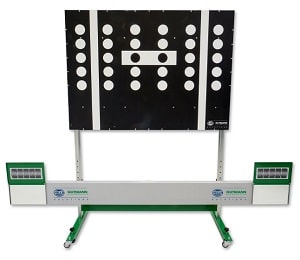Posted by Darren on Jun 12, 2023
If you're looking to buy a new automobile, the quick-paced and constantly-evolving world of ADAS systems could feel a little bit overwhelming. How many of these cutting-edge features are you going to need? What future trends can you anticipate? To know more about ADAS future trends you will need to know a bit more on ADAS and car autonomy levels. So without further ado, let's dig right into it.
Car Autonomy Levels:
-
Level 0:
This level includes most cars these days that are manually driven. Even though there are systems in place that help the driver, it is mainly handled and driven by the driver itself.
-
Level 1:
Also known as the basic level, it features functions and benefits that often modern cars consider and provide as extra features. Some of these features include lane departure indications, blind spot detection, front and rear collision warnings, etc.
-
Level 2:
In this level, the driver is presented with driving assistance features. Steering, deceleration, and acceleration is all controlled by the automobile. The driver only needs to sit and can take over control of the car at any given moment. Some features that are included in level 2 are automatic speed control, distance controlling, lane keeping assistance, cruise control, automatic emergency braking, etc.
-
Level 3:
Automobiles with this kind of partial automation have the ability to detect their environment and make decisions accordingly like passing by a vehicle driving slowly. However, they still require human overriding. Therefore, it is crucial for the driver to be aware of his/hers surroundings and able to take over at any time if the system isn't allowing the execution of the task.
-
Level 4:
What differs level 4 from 3 is that it provides conditional automation, meaning that if an issue is detected on the road or any system failure, they have the ability to intervene. Essentially, they don't always need interaction with the driver. However, the driver can always take over manually when driving an automobile of this level.
-
Level 5:
These automobiles offer full automation like a chauffeur under certain conditions that do not require human interaction. However, it is only limited to particular areas till infrastructure and legislation changes accordingly. Therefore, level 5 automobiles are not as common currently but that will change soon in the future.
-
Level 6:
As you might have guessed already, level 6 consists of fully automated automobiles that require no humans to drive the car. While they aren’t on the market yet, they are soon to be introduced in the coming years.
Now that you are aware of the different levels in vehicle automation, here are a few trends in ADAS that you can expect to see in the future.
Check Out These Future ADAS Trends:
-
5G integration and better connectivity in ADAS:
Most newer vehicles are able to wirelessly upgrade its hardware and sensors with new and improved enhancements as they are remotely controlled thanks to the inclusion of intelligent, wireless technology. Additionally, the continuity of 5G integration will result in enhanced automotive cybersecurity. Therefore, you can expect technologies that are less susceptible to external and internal tampering.
With the help of 5G, cloud-based apps, automated predictive maintenance systems and other technologies would take on an additional data-centric approach to vehicle maintenance. Therefore, before anything could even go wrong in your vehicle for it to be taken care of, the technology will bring any underlying issue to your attention several times in advance.
-
Fusion of sensors in ADAS:
 The ADAS featured cars these days are equipped with additional sensors to ensure passenger safety and monitor its surroundings. There are different types of sensors for different purposes and reasons.
The ADAS featured cars these days are equipped with additional sensors to ensure passenger safety and monitor its surroundings. There are different types of sensors for different purposes and reasons.
For instance, there are sensors for infrared detection, light detection and ranging, adaptive cruise control, and many more. The fusion of sensors is a modern ADAS trend that most manufacturers are already on to.
The purpose of a sensor fusion is to provide a better communicative network among the other car sensors. Therefore, equipping it better in providing proactive and predictive information to the driver.
-
Human Machine Interface in ADAS:
Once touchscreen technology was introduced to the world, it did not take much time for people to get accustomed and find it easier to operate than others. While you can almost see some sort of touchscreen technology already introduced in the automotive industry, you are likely to see more and more of it in the coming future.
Even when parked, you will see better and improved interaction between the driver and the touch screen. Advanced human machine interface technology would allow the driver to interact with it while driving and without moving their hands off the steering wheel or causing any distraction while driving. Therefore, the chances of any accident caused due to such distractions will drastically drop.
-
Vision embedment in ADAS:
Vision embedment technology does more than just potential risk identification, it is also vital for data accumulation and offering on-the-road indications and warnings such as lane drifts. This continually evolving system is responsible for gathering necessary data for advanced benefits like traffic sign recognition, automatic parallel parking, etc. Vision systems that are in-built provide enhanced safety to the driver and passenger as they can also be beneficial for driver monitoring by warning the driver of any risk detection in case the driver isn't being attentive.